Volkswagen Crafter Review 2025
Volkswagen Crafter At A Glance
The Crafter is Volkswagen’s largest and most versatile van. It’s available with a wide choice of bodystyles - including panel van, tipper and dropside - while the largest versions will easily carry six Euro pallets and offer gross vehicle weights of 5.5 tonnes.
Admittedly, the VW Crafter isn't as established a name in the big van market as the Ford Transit or Mercedes-Benz Sprinter, but the Volkswagen has more than enough in its locker to hold its own against the class leaders.
The range spans 69 different versions, with a wide (if slightly confusing) choice of body lengths and heights. Front-wheel drive versions offer a cargo capacity of 18.4 cubic metres, spanning 3.0 - 4.0 tonnes, while rear-wheel drive versions cover gross vehicle weights of 3.5 - 5.5 tonnes.
Unlike its predecessor, the Crafter is no longer built by Mercedes-Benz alongside the Sprinter. Instead, for the first time in 20 years, the Crafter is built by Volkswagen. This means it benefits from its comprehensive range of tech, with the 2.0 TDI engine and gearbox sourced from the T6 Transporter. You'll also find the Crafter rebadged as the MAN TGE.
The Crafter's four-cylinder diesel engine is available in four versions, 102PS, 122PS, 140PS and 177PS, with the latter using a twin turbocharger. All pull strongly through the low gears, while engine and road noise levels are well suppressed at motorway speeds. However, with claimed economy in the region of 38mpg, the Volkswagen doesn’t match its rivals for economy, with many large vans in this class surpassing the 40mpg barrier.
The Crafter does handle better than many other large vans, with smooth and light steering that makes it easy to navigate narrow streets or heavy traffic. The stress of inner-city driving can further be reduced with an automatic parking system - for hands free parallel parking. You can also fit a useful cross traffic system, which will warn you of approaching vehicles when you're reversing off a driveway or out of a space.
The Crafter’s biggest selling points, however, lie in its big load carrying potential and its impressive handling. Indeed, for its size, it is surprisingly easy to use and its driving characteristics are more akin to a much smaller van. Some might be put off by its higher running costs, but the comfortable and high tech Crafter remains a worthy rival to the best large panel vans.
Driving the Volkswagen Crafter
The Volkswagen Crafter is one of the better large vans to drive, owing to the fact that much of its running gear has been carried over from the T6 Transporter.
This means, behind the wheel at least, it feels like a much smaller van, with light steering, a compact turning circle and punchy engine performance. Even though this Crafter is now several years old it doesn't feel dated to drive, and is far superior to the ancient Fiat Ducato-based models.
The raised cab provides a commanding view of the road and getting in and out is easy, thanks to the grab handles that are positioned on the front pillars. Once in, it doesn’t take long to find a comfortable driving position and the driver’s seat has height and lumbar adjustment. Amazingly you can even specify a massaging driver's seat on certain versions.
All VW Crafters get two-tier door mirrors as standard too, which makes it easy to spot passing traffic or cyclists by minimising blind spots at the sides.
Our main tests involved the front-wheel drive versions of the Crafter, which is powered by a 2.0-litre TDI with 102PS, 122PS, 140PS or 177PS respectively, but all pull strongly through the gears, with a respective 300Nm, 340Nm and 410Nm flowing from 1400rpm. Our pick of the bunch is the 140PS unit, however, as it feels less strained when carrying a full load and (like all of the engines) will tow 3.5 tonnes when hooked up to a braked trailer.
Claimed economy for front-wheel drive versions is in the region of 38mpg, which is some way behind the best large vans that surpass 40mpg. However, while it might not be as efficient as its rivals, the Crafter is better to drive, with predictable handling and lots of front-end grip. Engine noise and road roar are also well suppressed, which makes the Volkswagen a pleasant place to while away the motorway miles.
A six-speed manual gearbox is fitted as standard and, although notchy, provides a decent outlet for the four-cylinder engine’s power. An eight-speed torque converter automatic is available as an option and it works extremely well with intelligent up and downshifts, making it one of the best automatic vans on the market. That said, the automatic is limited to front-wheel drive and four-wheel drive versions only, which means rear-wheel drive vans are limited to manual 'boxes.
The Crafter can be fitted with an array of technology, which includes autonomous parking, cross traffic alert and adaptive cruise control. The cross traffic warning device is the most impressive, helping prevent accidents when reversing out of a road or driveway, by monitoring approaching vehicles and automatically applying the brakes if the system thinks the driver will pull out in front of oncoming traffic. The adaptive cruise control is also useful on the motorway by automatically adjusting the van's speed to maintain a safe distance from the vehicles ahead. The only downside is not all of this tech is standard fitment.
Volkswagen Crafter interior
With 69 different versions, there is pretty much a Volkswagen Crafter to suit every job. The mainstay of the range is based on panel vans, which are available in three load lengths and heights. The Crafter can also be specified with single or double cabs, along with tipper or dropside bodystyles.
Rear-wheel drive versions offer the most when it comes to gross vehicle weight, spanning 3.5 to 5.5 tonnes, depending on which bodystyle you choose. Front-wheel drive versions will offer 3.0 to 4.0 tonnes, but provide more cargo space - 18.4 cubic metres - due to the fact that the load floor sits 100mm lower to the ground. As always, you'll need to check your driving licence to see the exact weight of the vehicle you're permitted to drive.
Getting into the load area is easy thanks to the large side sliding door that provides an opening of 1311mm. The rear doors are light to use and large, with an opening of 1552mm. An optional 270 degree opening mechanism for the doors can also be fitted, along with wooden sidewall and floor protection, which should prevent large loads from catching the doors or damaging the sides of the van.
Most VW Crafters will carry six Euro pallets and the cab can be remotely locked, which means you can load and unload without worrying about valuables being taken from the cab when the van is out of sight. Payloads range from 735kg to 2573kg, depending on spec.
The interior of the Crafter isn’t quite as upmarket as the Mercedes-Benz Sprinter, with more hard plastics, but overall it seems very solidly put together with excellent fit-and-finish. We've no doubt it'll put up with years of hard use from operators.
Storage is good, too. doors have deep and wide pockets, which are large enough for a decent sized bag or laptop case. Overhead shelves are also fitted, along with cup holders and 12V power supplies for charging phones and laptops. Most versions get three seats as standard, with a foldable middle seat that doubles up as a laptop table.
The dashboard layout is similar to the Transporter, with a minimalist design that feels well made, albeit appearing a touch dated in 2023. A touchscreen infotainment system is available with navigation, DAB radio and Bluetooth. Although it's clearly a version of the system used in older Volkswagens, that actually makes it much easier to use on the move than the brand's newer systems.
Spending long durations behind the wheel is comfortable, with lots of padding in the driver’s seats for the back and upper legs. An optional ErgoComfort seat, with shock absorber cushioning and 14 different settings for your back is also available. The only downside to the driving experience is a tendency to bounce, which can leave the driver feeling a little green when navigating twisty roads.
Model History
- May 2015: Crafter gets autonomous emergency braking as standard
- July 2016: New Volkswagen Crafter unveiled
- December 2016: Volkswagen confirms all-electric version of the Crafter
- May 2018
- May 2019: Crafter minibus launched
May 2015
Crafter gets autonomous emergency braking as standard
Volkswagen the first commercial vehicle brand to fit all its vans with autonomous emergency braking systems (Front Assist with City Emergency Braking), meaning all customers ordering a new Caddy, Transporter or Crafter van from 1 June will be guaranteed safety as standard.
Using a radar built into the front end of the van, Front Assist recognises critical distances to the vehicle in front and helps to ensure safe stopping. In any dangerous situations Front Assist reacts here in two stages: in the first the assistance system warns the driver with audible and visual signals of any vehicle in front driving slowly or suddenly braking and of the associated risk of collision. In parallel it gets the vehicle ready for emergency braking – by applying the brake pads and alerting the brake assistant. If the driver fails to react to the warning, a one-off short jolt of the brake indicates in the second stage the looming danger of a collision and the brake assistant’s responsiveness is further increased. If the driver then hits the brakes, full braking power is immediately available. If the driver does not brake strongly enough, Front Assist increases the braking pressure to the required level, so that the vehicle comes to a stop before reaching the obstacle.
The system also includes the City Emergency Braking function, which provides assistance at low speeds of under 18 mph. If the driver fails to see or react to an obstacle, the system automatically applies the brakes and ensures that the speed of any collision is reduced. Ideally, it completely prevents the vehicle from running into the obstacle.
July 2016
New Volkswagen Crafter unveiled
Shown at a special preview event in Germany, the Crafter is the first large van to be built by Volkswagen in 20 years. Unlike previous versions – built by Mercedes-Benz – the Crafter is produced at a purpose built factory in Wrzesnia, Poland.
Available in 69 derivatives, including tipper, dropside and panel van, the Crafter is capable of carrying six Euro pallets and gross vehicle weights of 5.5 tonnes. In its largest for, the Crafter will provide cargo volume of up to 18.4 m3 and a maximum cargo space height of 2196 mm.
The 2.0 TDI engine, the “EA 288 Commercial”, which are carried over from the T6 Transporter, is available with front-wheel drive at three different power output levels: 102PS, 140PS or as a BiTurbo TDI with 177PS. The 1968cc TDI engine is installed transversely, and it is inclined eight degrees towards the front, which results in shorter equipment length and thereby provides more space for the driver and payload. All engines.
From around mid-2017, the powertrains on offer will be supplemented by the 4MOTION all-wheel drive system with a transversely mounted engine and the rear-wheel drive system with a longitudinally mounted engine.
Thanks to the electromechanical steering, the Crafter provides an outstandingly wide array of active driver assistance systems, such as an active lane-keeping system (Lane Assist), a parking assistant (Park Assist) and an assistant for manoeuvring a trailer (Trailer Assist). Other assistance systems, some of which are optional, include the “ACC Follow to Stop” adaptive cruise control system, the Front Assist emergency braking system, the standard Automatic Post-Collision Braking System, the side wind assistant that is also standard, driver alert system, automatic main beam dipping control by Light Assist and much more.
December 2016
Volkswagen confirms all-electric version of the Crafter
Powered by a 100-kilowatt motor, the eCrafter is capable of carrying 1.7 tonnes up to 129 miles on a single charge.
With a permitted total weight of 4.2 tonnes, the eCrafter's 312 cell battery pack will take 45 minutes to charge from empty to 80 per cent. What's more, owing to the fact the battery pack is located under the cargo floor, the load space is the same as the diesel-powered version, with 11.3 cubic metres and a maximum cargo height of 1961mm.
The 100-kilowatt electric motor will produce 290Nm of torque - which is roughly the same as a standard 2.0-litre TDI Crafter - and the zero tailpipe emissions should make the eCrafter suitable for city-based delivery companies, universities, housing associations and utility firms.
May 2018
Warranty improved on new Crafter from three-years and up to 60,000 miles to three-years and unlimited mileage. The warranty, which is composed of a two year manufacturer warranty and third year Van Centre guarantee protects against the failure of most mechanical and electrical components due to manufacturing defects.
May 2019
Crafter minibus launched
Offered through Volkswagen’s Engineered To Go programme, the wheelchair-accessible minibus has a wheelchair lift and 16 passenger seats.
Entry is via a manually operated front entrance door with a modified stepwell or the Braun Vista Split inboard passenger lift at the rear. As the conversion is completed by a Recognised Partner, the Crafter Minibus comes with a conversion warranty that matches the base vehicle.
The 17 seat layout, including driver, is fully configurable, too, with quick release functions allowing the Crafter minibus to be adapted to accommodate up to six wheelchairs in a matter of minutes. There is also a choice of wheelchair and wheelchair occupant restraint systems available.

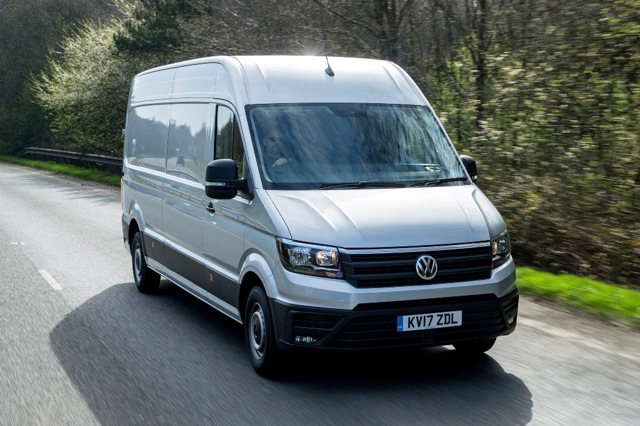
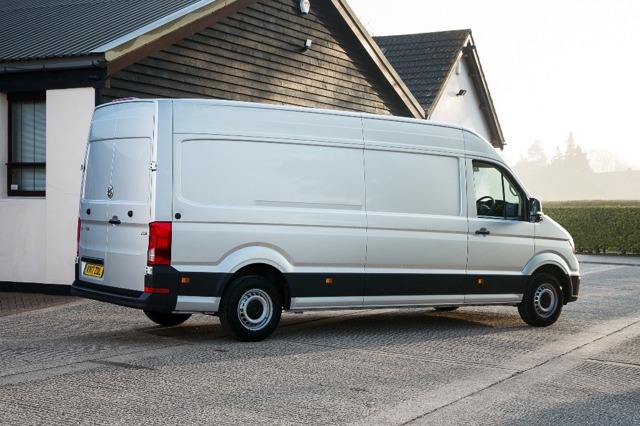
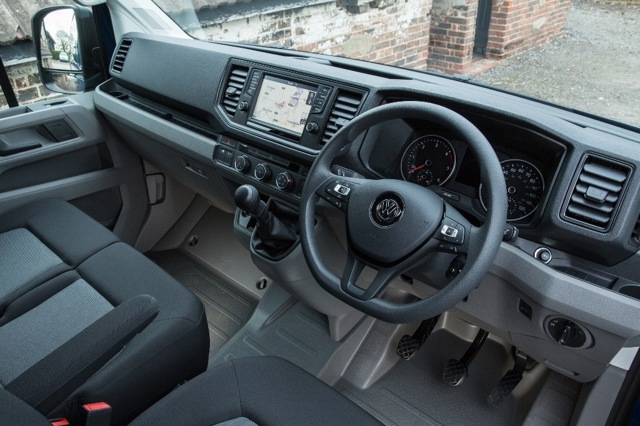
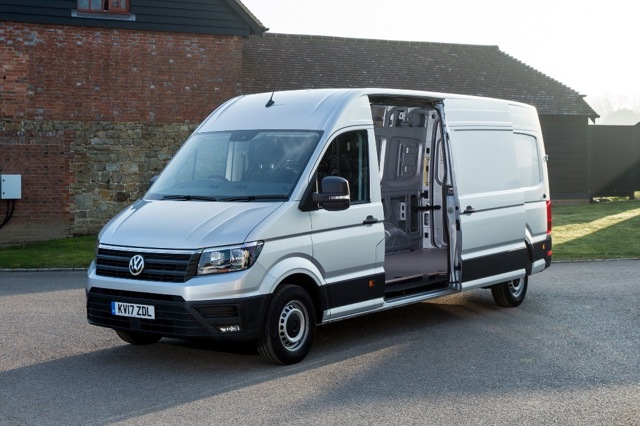
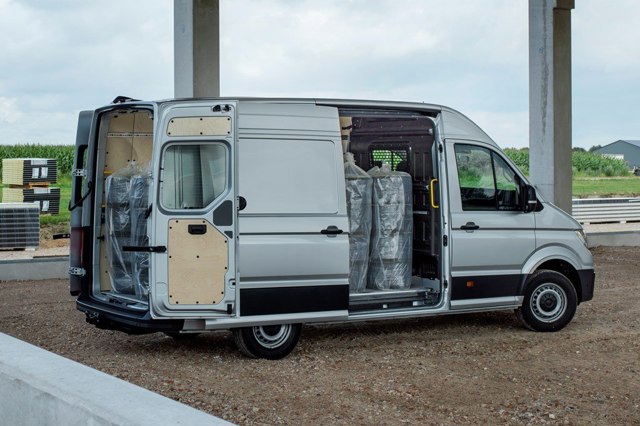
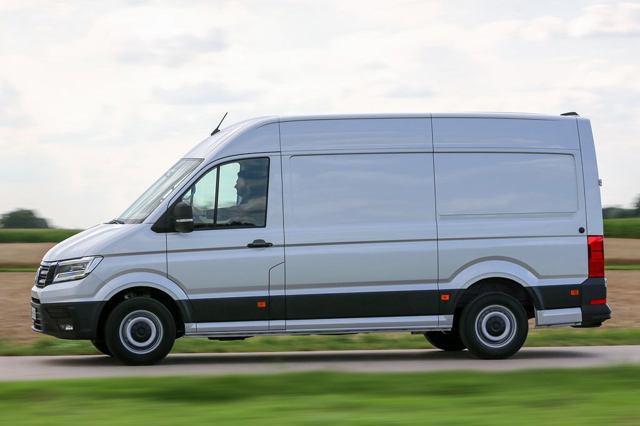
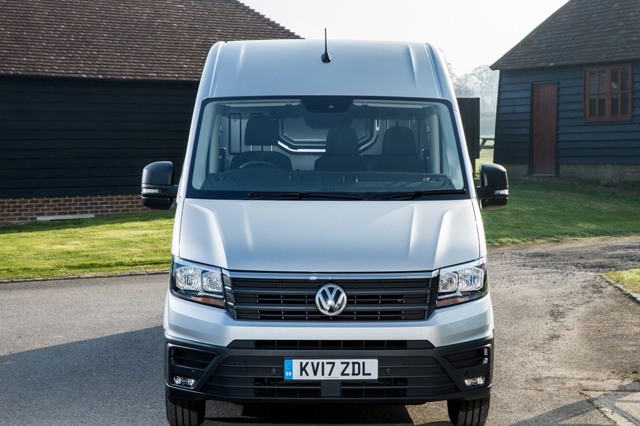
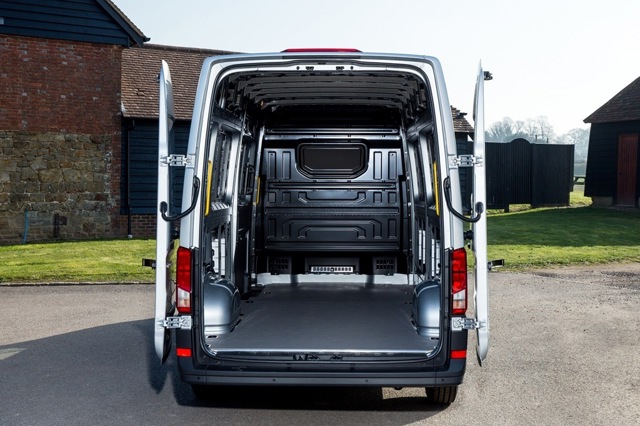
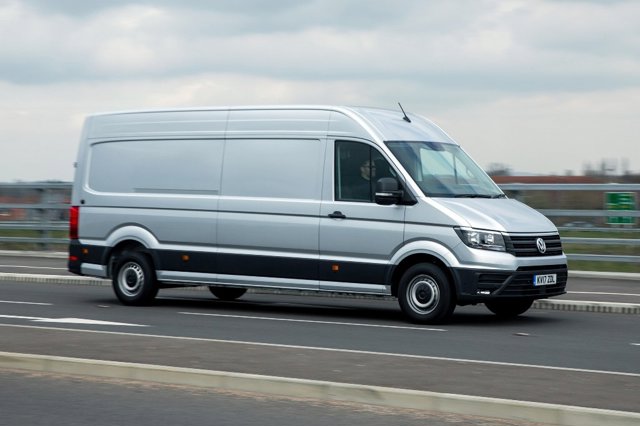
:no_upscale():format(webp)/https://cdn.uk.prod.group-mobility-trader.com/images/cas/c459b07b14cc5ff130985d9013cae67b/d3c6ceeec1a305ce87220659d9d06dcb.jpg)

 Pleasant and very easy to drive, comfortable and refined with a top-class cab design, impressive array of safety tech available.
Pleasant and very easy to drive, comfortable and refined with a top-class cab design, impressive array of safety tech available.
 Not as efficient on paper as its big van rivals, cabin may seem a bit dated to some, much of the tech is optional
Not as efficient on paper as its big van rivals, cabin may seem a bit dated to some, much of the tech is optional
:no_upscale():format(webp)/https://cdn.uk.prod.group-mobility-trader.com/images/fallback/coming-soon.webp)
:no_upscale():format(webp)/https://cdn.uk.prod.group-mobility-trader.com/images/cas/e314ae588f9a1dfac8c15585fc9f4011/ad3c0453c72f501626a5146dd0c337ca.jpg)